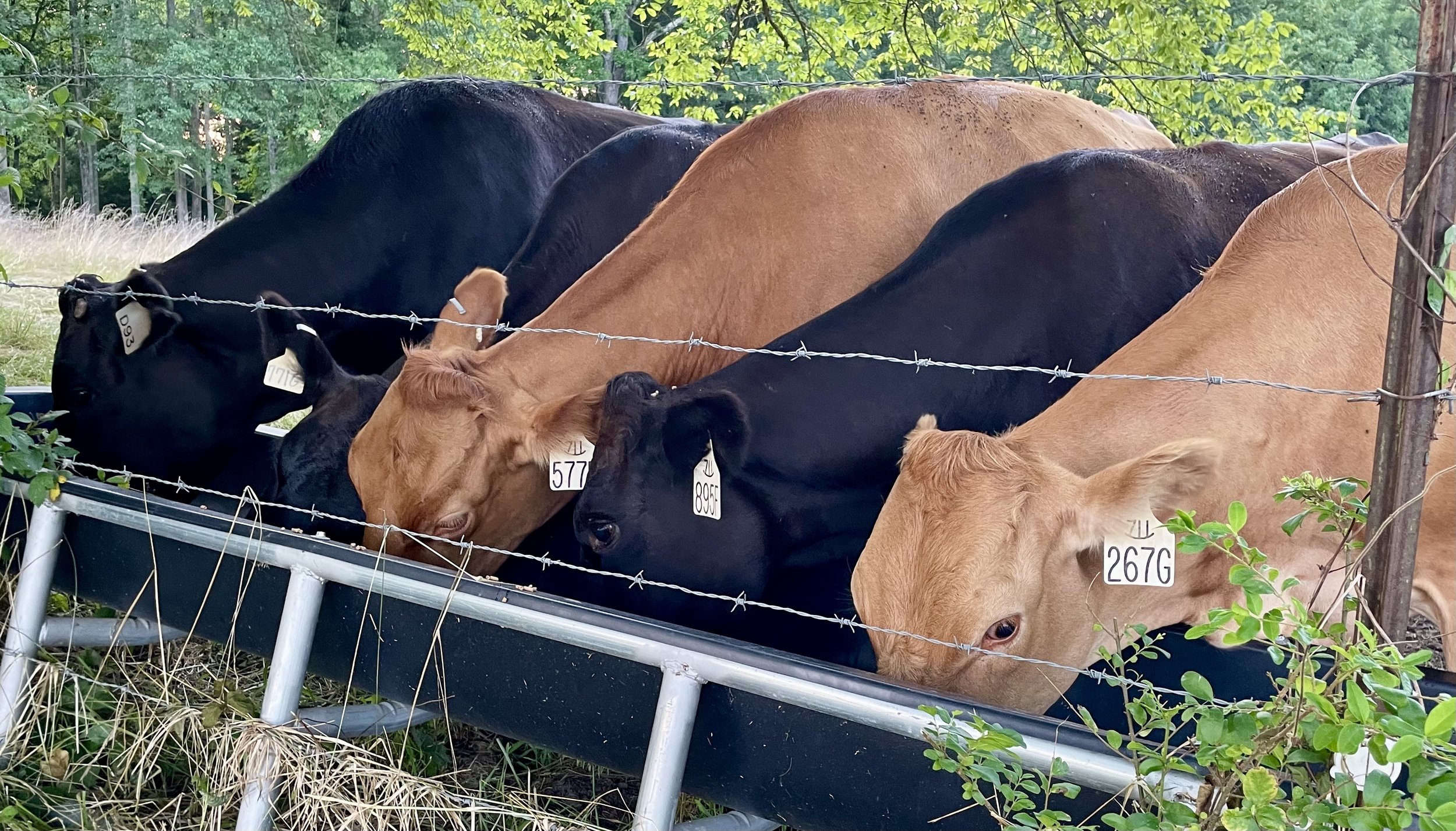
WAGYU BREEDS
Wagyu Breeds
Tajima originated in the Hyogo prefecture, of which the city of Kobe is the capital. This bloodline descended from the sire Tajiri, a sire born in 1939 in the Mikata District of the Hyogo Prefecture. Animals from this bloodline are sometimes referred to as Tajiri. This is a large, influential sire-line to which almost all bloodlines within the Hyogo prefecture are related.
Tajima were originally used to pull carts and plows so over time they developed larger forequarters and lighter hindquarters. In Japan, this strain is generally regarded as producing the best quality meat as compared to the other strains. The Tajima strain is typically smaller framed, have slower growth rates and are frailer as compared to the other strains of Black Wagyu.
While all of the “Japanese Black” have been crossbred with non-Japanese cattle to some degree during the Japanese government-led improvement program that was in place between approximately 1867 and 1910, generally speaking, the Tajima line was less influenced by crossbreeding as compared to the other three lines of Wagyu. This strain produces excellent meat quality with a large eye muscle and superior marbling. They are also known for having an excellent temperament. This is the strain of Wagyu that made “Kobe Beef” famous outside of Japan.
Fujiyoshi originated with the sire Dai 13 Hanayoma in the Okayama prefecture of Japan. Over time the Fujiyoshi strain was introduced to other prefectures. Dai 7 Itozakura is probably the most famous of the Fujioshi strain, and was born in the Shimane prefecture.
A large portion of the Fujiyoshi strain Wagyu outside of Japan descended from Dai 7 Itozakura. For this reason, the Fujiyoshi strain is often referred to as Shimane. These animals are medium framed, have average growth rates as compared to the other 2 strains of Black Wagyu, have good maternal qualities, good fertility and produce good meat quality.
Kedaka originated in the Tottori prefecture, and this bloodline is also sometimes referred to as Tottori. This strain of Black Wagyu was originally bred to be used as pack animals in Japan. This selective breeding is believed to have resulted in the larger frame size, the straight, strong back lines and generally good growth rates of this strain of Black Wagyu.
The meat quality of this strain is somewhat more variable as compared to the Tajima line, but the milking ability is better as compared to the other 2 strains of Black Wagyu.
Red Wagyu are substantially different animals than the three strains of Black Wagyu. These animals are referred to within Japan as “Japanese Brown”, and outside of Japan are also sometimes referred to as “Akaushi” as well as “Kumamoto Red”.
Red Wagyu are a red hided animal that originated in the southern part of Japan, primarily in the Kumamoto prefecture, which is located on the island of Kyushu in southwestern Japan, where range grazing is more popular than the confinement operations typical in other parts of Japan.
The Red Wagyu bloodline is believed to have evolved from ancient Asian breeds that on the Southeast Asian mainland evolved into the red Korean breeds such as the modern Korean Hanwoo. This bloodline was then influenced during the Japanese government led improvement program by crossbreeding with certain European breeds, including primarily the Simmental and Devon breeds. Some reports indicate that Korean Hanwoo was also utilized in the crossbreeding program.
Red Wagyu are larger on average than the 3 main strains of Black Wagyu, grow faster and are thicker, heavier animals. There are many examples of excellent meat quality from Red Wagyu.
In Japan there are two other minor strains of Wagyu that have not been exported, the “Japanese Polled” and “Japanese Shorthorn”. These two strains of Wagyu were heavily influenced by crossing of European breeds with native Japanese cattle between 1868 and 1910, and make up a very small percentage of the total Wagyu herd in Japan.
Wagyu are genetically predisposed to produce excellent quality beef. Wagyu cattle arguably produce the best quality beef in the world, a beef product that is tender and highly marbled. Wagyu beef is also more healthful than beef from other breeds of cattle due to a higher ratio of monounsaturated fatty acid as compared to saturated fatty acid.
